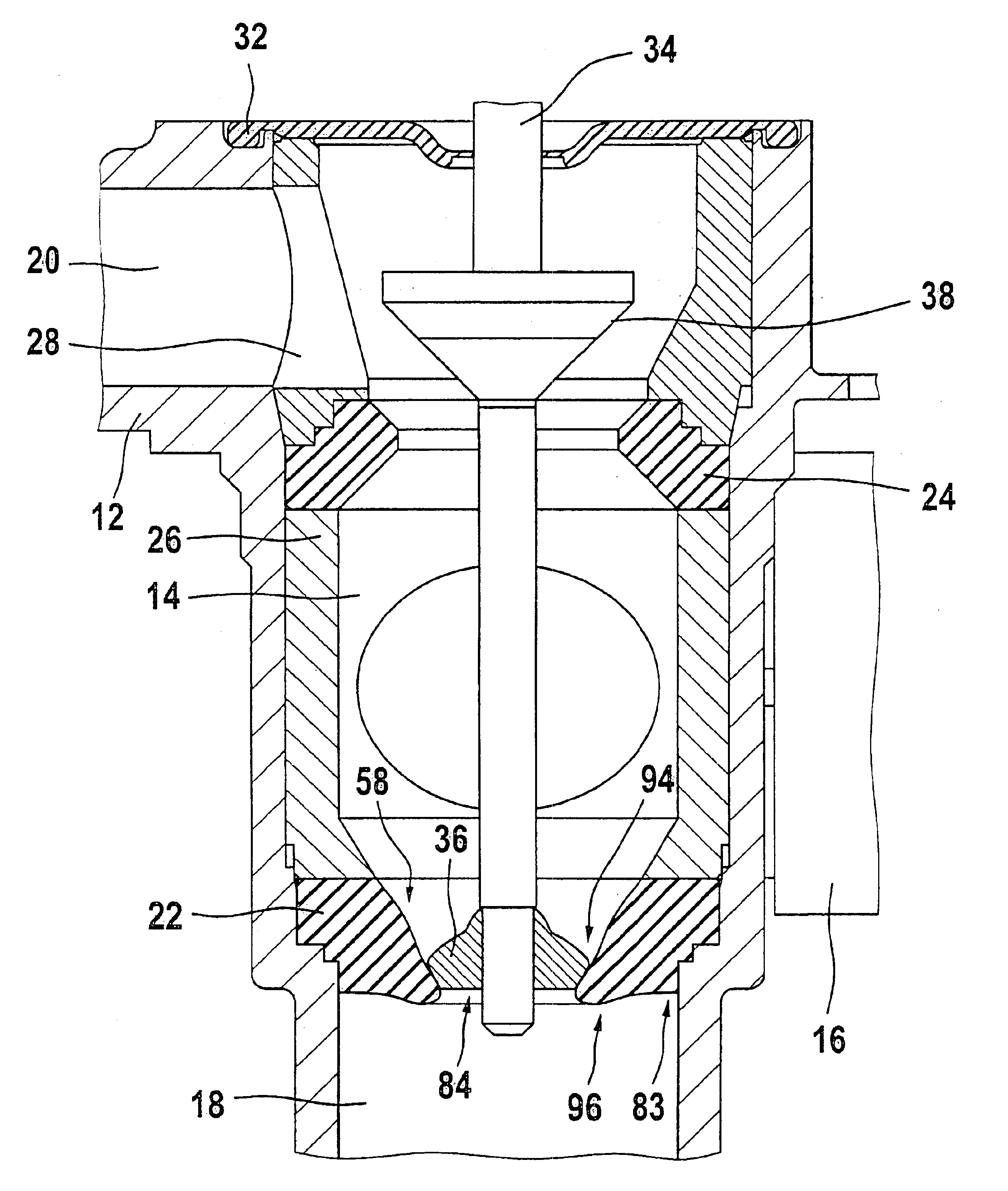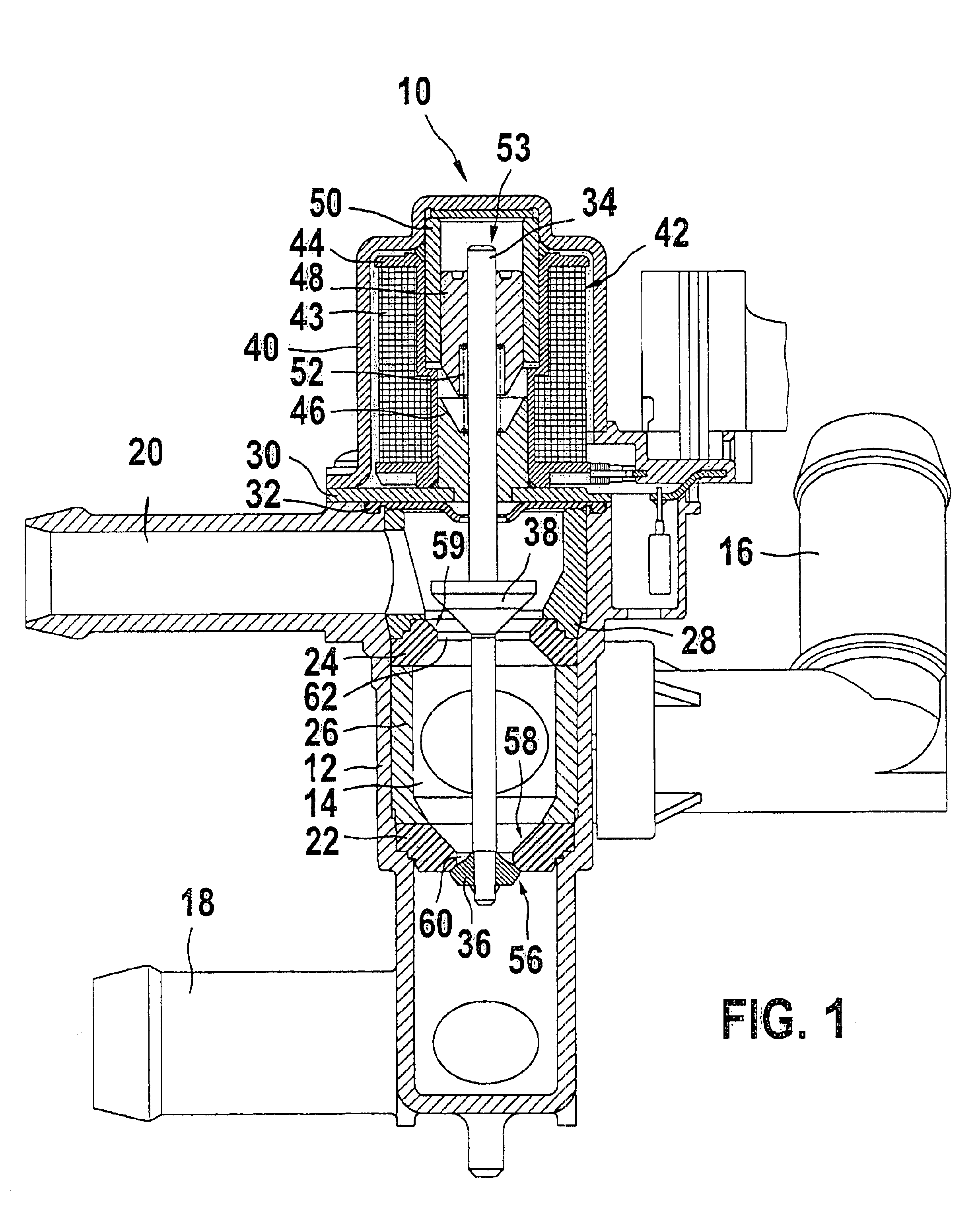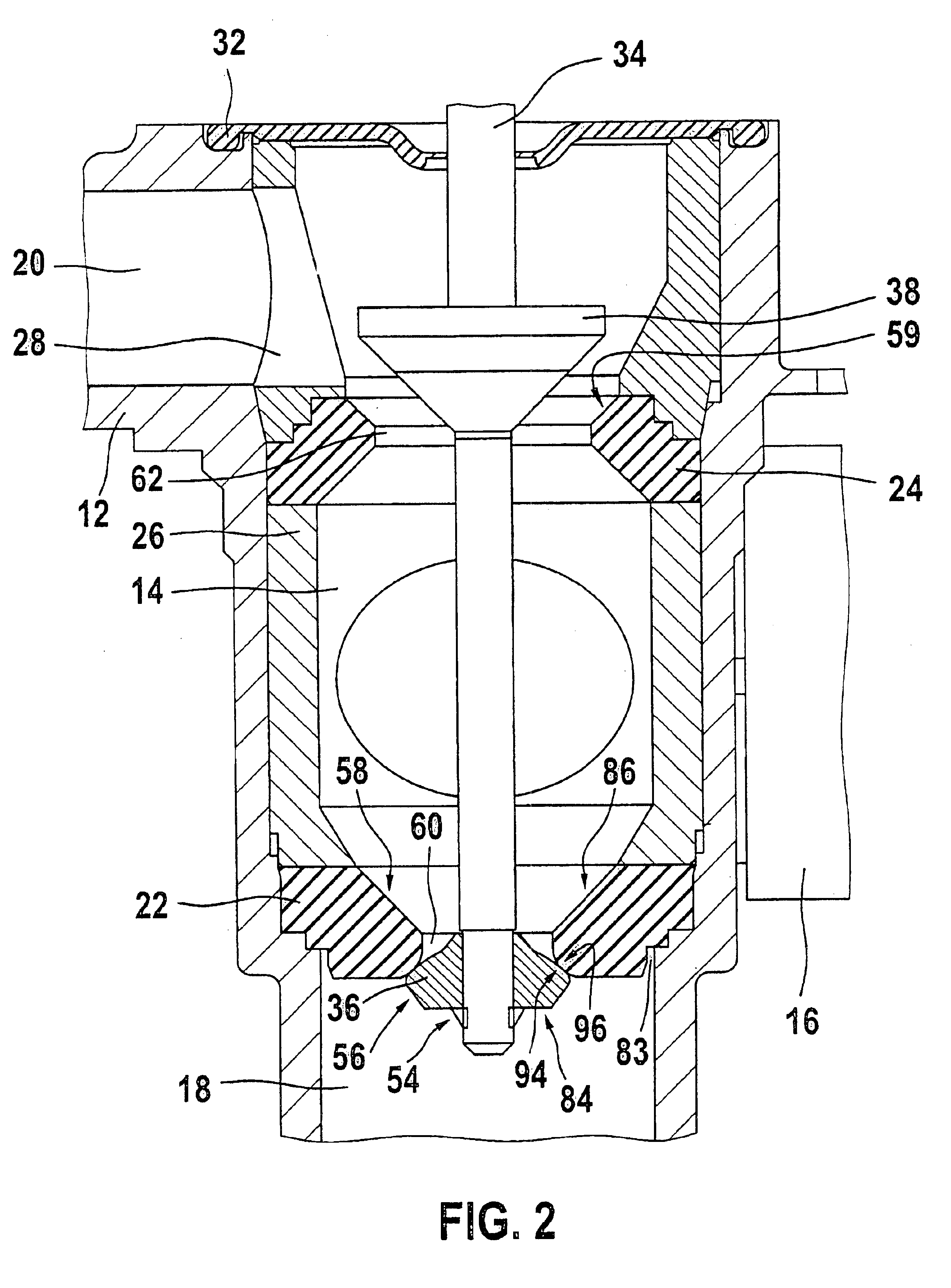Valve comprising elastic sealing elements
a technology of elastic sealing elements and valves, which is applied in the field of valves, can solve the problems of complex assembly of individual components of valves, inconvenient assembly, and high cos
- Summary
- Abstract
- Description
- Claims
- Application Information
AI Technical Summary
Benefits of technology
Problems solved by technology
Method used
Image
Examples
Embodiment Construction
The valve 10 according to the invention, shown in cross section in FIGS. 1 and 2, has a valve housing 12, which has a valve chamber 14, leading into which are an inlet conduit 16, a first outlet conduit 18, and a second outlet conduit 20. The valve chamber 14 is inserted into the valve housing 12 and is formed by one valve seat 22--at the bottom in FIG. 1 or FIG. 2--facing the first outlet 18; one valve seat 24--at the top in FIG. 1 or FIG. 2--facing toward the second outlet conduit 20; and one spacer sleeve 26, disposed between these two sealing elements, which defines the actual volume of the valve chamber 14. The valve chamber 14 of the valve 10 can thus be replaced, and the valve 10 can thus be adapted more easily to special applications. The valve seats 22 and 24 of the valve chamber 14 are of an elastically stretchable material in this exemplary embodiment, such as NBR (nitrile butadiene rubber) and each have a respective valve opening 60 and 62. The valve chamber 14 is fixed ...
PUM
 Login to View More
Login to View More Abstract
Description
Claims
Application Information
 Login to View More
Login to View More - R&D
- Intellectual Property
- Life Sciences
- Materials
- Tech Scout
- Unparalleled Data Quality
- Higher Quality Content
- 60% Fewer Hallucinations
Browse by: Latest US Patents, China's latest patents, Technical Efficacy Thesaurus, Application Domain, Technology Topic, Popular Technical Reports.
© 2025 PatSnap. All rights reserved.Legal|Privacy policy|Modern Slavery Act Transparency Statement|Sitemap|About US| Contact US: help@patsnap.com



